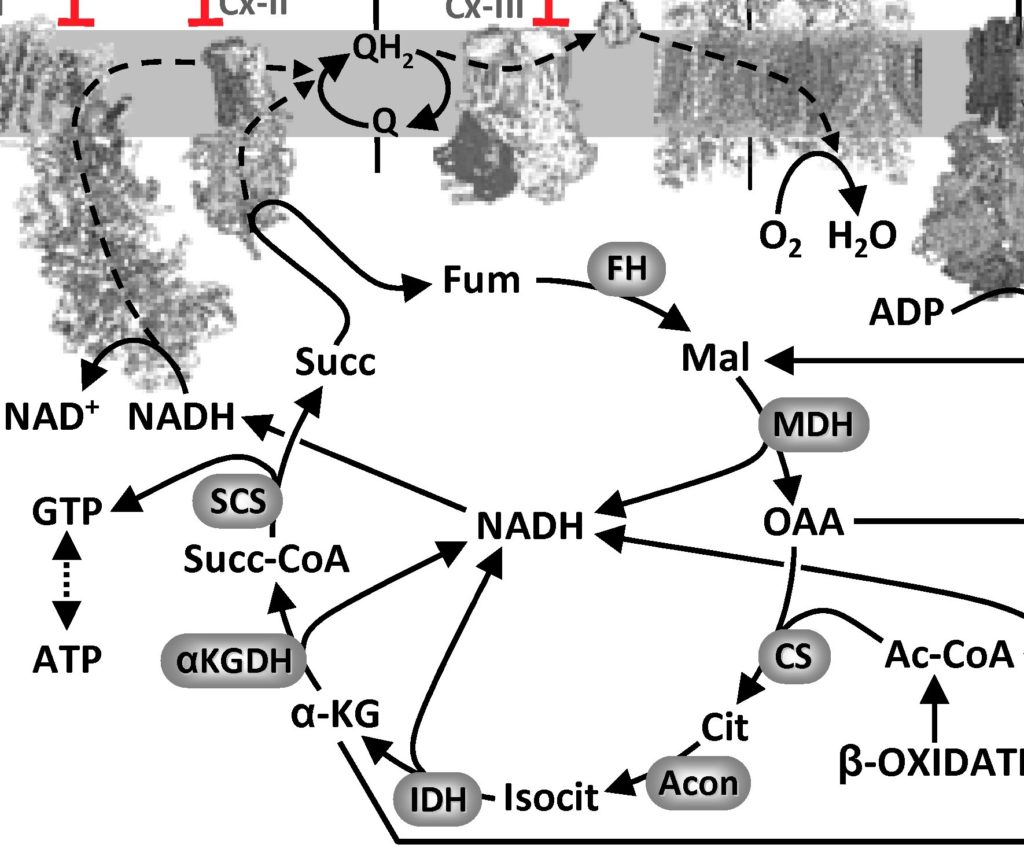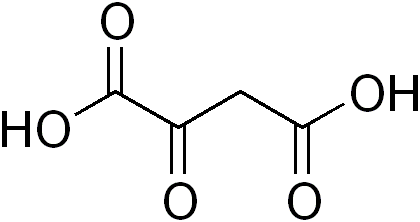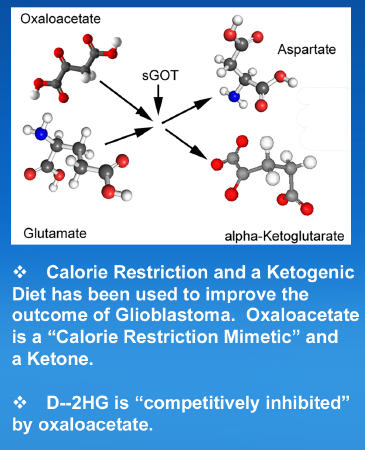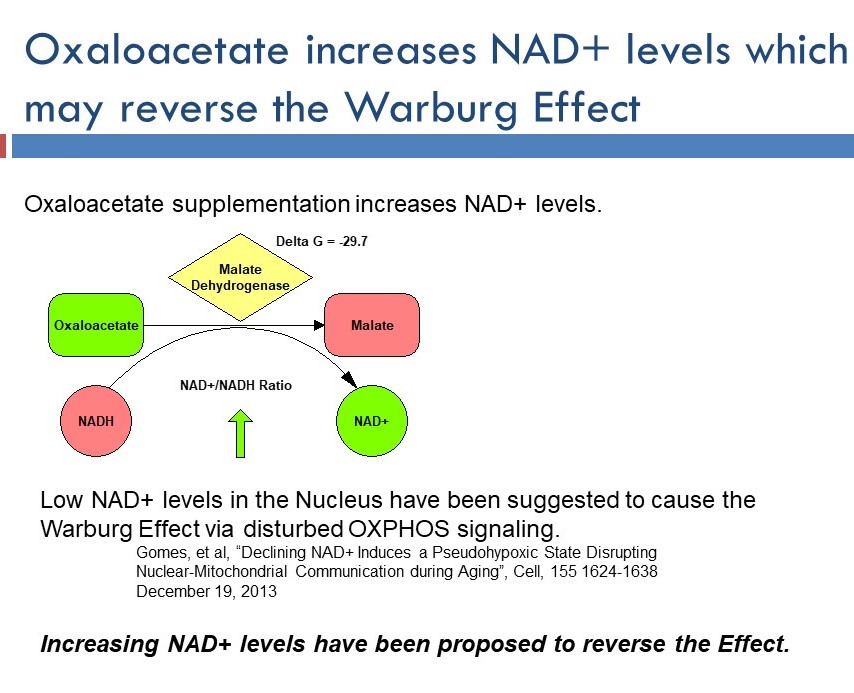This post is a bit late, but I wanted to record the story behind our recent eLife paper on ALKBH7 somewhere less ethereal than Twitter.
The story for us started as a collaboration with Dragony Fu in UofR’s Department of Biology. Dragony has worked on ALKBH7 for a number of years, and had shown that it plays a critical role in programmed necrosis in response to DNA alkylation. In addition there was some earlier work showing that the Alkbh7-/- mouse was obese and had some fat oxidation problems.
ALKBH7 is a mitochondrially-localized member of the alpha-ketoglutarate (aKG) dependent dioxygenase family. This includes enzymes you’ve probably heard of such as the TETs, the Jumonji domain demethylases, and the EGLN family of prolyl hydroxylases that regulate HIF. All these proteins add -OH onto something, for varied reasons. For example the DNA demethylases perform a “demethylation via hydroxylation” fundtion – they add -OH to the methyl group, which then spontanously decomposes, giving back the original non-methylated DNA base and formaldehyde. ALKBH7 is a homolog of the E. coli DNA repair enzyme ALKB, and pretty much all the other members are involved in repairing DNA alkylation damage.
The problem is, nobody has ever found a substrate for ALKBH7! It lacks the usual DNA binding pocket that other ALKB proteins contain. In-fact, the only thing it’s ever been shown to do is hydroxylate itself on a leucine. So, we hypothesized that ALKBH7 might be a mitochondrial prolyl-hydroxylase. We sent a bunch of WT and KO heart samples off to ‘Tish Murphy’s lab, where Leslie Kennedy performed a proteomic analysis – the idea was that if ALKBH7 is a prolyl-hydroxylase, we should see less P-OH in its substrate proteins, in the knockout.
Nothing! No differences. Well, there was one protein that showed lower hydroxylation… hydroxyacyl-CoA dehydrogenase. This was interesting at first, because remember the knockouts are obese. What if prolyl-hydroxylation was a novel mechanism of regulating fatty acid beta-oxidation? Well we did a bunch of enzymology on the dehydrogenase and nothing panned out, so that was a dead end.
As part of the proteomic analysis, we also had an abundance data set, giving us the levels of 3700 proteins in the WT vs. KO hearts, and here’s where things got interesting… only 2 proteins were up, and one of them was glyoxylase I (GLO-1). We confirmed this both by western blot and by doing GLO-1 activity assays, and the effect was real.
So, what’s GLO-1? (it’s also worth noting we ignored this finding for several months because the protein was listed as “lactoylglutathione lyase” in the data set, and we didn’t know what the hell that was all about, so…) Anyway, GLO-1 is a key enzyme involved in the detoxification of methylglyoxal (MGO), which is a toxic byproduct of glycolysis. Excess glucose metabolism such as occurs in hyperglycemia and diabetes, leads to more MGO, which can react with various biomolecules to form “advanced glycation end products” (AGEs). These post-translational modifications essentially gum up protein fucntion, and this is what’s believed to drive a lot of the pathology of diabetes. When a diabetic patient gets tested for glycated hemoglobin (aka “HbA1C” or simply A1C), that’s the MGO adducted form of hemoglobin, used to indicate long term trends in blood glucose. We also did a bunch of metabolomics analysis, to show that glycolysis is up in the ALKBH7 knockouts.
So, what does any of this have to do with cardiac ischemia-reperfusion (IR) injury, the main thing that we study? Well, the main mode of cell death in IR injury is necrosis, and remember ALKBH7 is required for necrosis. So, sure enough, we were able to show that the Alkbh7-/- mouse is protected against cardiac IR injury. We also made an inhibitor for ALKBH7 and showed that it is protective too. AND we showed that blocking the GLO-1 enzyme prevents the protection in the Alkbh7-/- mice. So, GLO-1 is required for the cardioprotection.
For most who study mitochondria and cardiac IR injury or protection, the mitochondrial permeability transition (PT) pore is the go-to target when we find an effect. But, we measured PT pore opening in Alkbh7-/- and it just wasn’t very impressive. Sure, there was a small change, but nowhere near enough to protect the heart from IR injury. So we struck out again. We also had recently shown that the induction of the mitochondrial unfolded protein response (UPRmt) was capable of inducing protection, but again no differences seen in the UPRmt in Alkbh7-/- mice. More negative data!
So, the upshot of all this is that we STILL don’t really understand how ALKBH7 is required for necrosis in heart attack. When you knock out ALKBH7, there’s an upregulation of GLO-1 and a rewiring of all the bits of metabolism that make MGO, and that appears to be required for the protection. But exactly how this protein in the mitochondrion signals to MGO production in the cytosol (where glycolysis is), is still not well understood.
Of course, the final writing and revision of the paper took place during the whole #Covid19 lock down and gradual reopening process, which essentially killed our ability to take a deeper dive and really close out the story. At the end of the day, it’s hard to study an enzyme for which there is no known activity and no known substrate! We’re still working in this area, and hope to be able to address some of these unknowns soon (for example by developing a screening assay for potential ALKBH7 substrates).
In sum, this started out as a collaboration with a biology colleague, took in a multi-omics approach (proteomics, metabolomics, PTM proteomics) and a bunch of other methods (the paper has >60 panels of data), and frankly most of what we found was negative. It’s frustrating, but that’s sometimes how science works. The good thing is we learned a bunch of interesting stuff along the way, and that brings us closer to understanding cardiac metabolism and how it can be manipulated for therapeutic benefit in situations such as IR.
As is usual for us now, the paper was posted as a preprint on @BioRxiv, and we also posted full data sets (humongous proteomics files) on FigShare.




